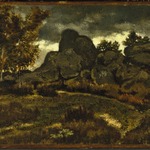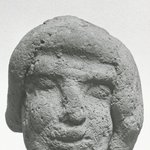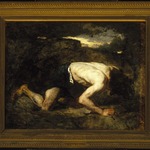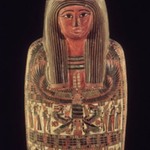

Egyptian. Mirror with Handle in Form of Girl, ca. 1400–1292 B.C.E. Bronze, 8 3/4 x 4 13/16 in. (22.2 x 12.2 cm). Brooklyn Museum, Charles Edwin Wilbour Fund, 60.27.1. Creative Commons-BY (Photo: Brooklyn Museum, 60.27.1_front_PS2.jpg)
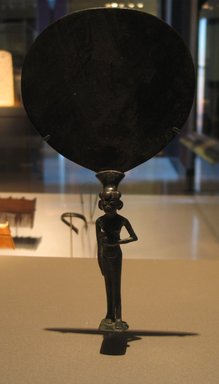
Egyptian. Mirror with Handle in Form of Girl, ca. 1400–1292 B.C.E. Bronze, 8 3/4 x 4 13/16 in. (22.2 x 12.2 cm). Brooklyn Museum, Charles Edwin Wilbour Fund, 60.27.1. Creative Commons-BY (Photo: Brooklyn Museum, CUR.60.27.1_erg456.jpg)

Egyptian. Mirror with Handle in Form of Girl, ca. 1400–1292 B.C.E. Bronze, 8 3/4 x 4 13/16 in. (22.2 x 12.2 cm). Brooklyn Museum, Charles Edwin Wilbour Fund, 60.27.1. Creative Commons-BY (Photo: Brooklyn Museum, CUR.60.27.1_print_negC_bw.jpg)

Egyptian. Mirror with Handle in Form of Girl, ca. 1400–1292 B.C.E. Bronze, 8 3/4 x 4 13/16 in. (22.2 x 12.2 cm). Brooklyn Museum, Charles Edwin Wilbour Fund, 60.27.1. Creative Commons-BY (Photo: Brooklyn Museum, CUR.60.27.1_print_negD_bw.jpg)
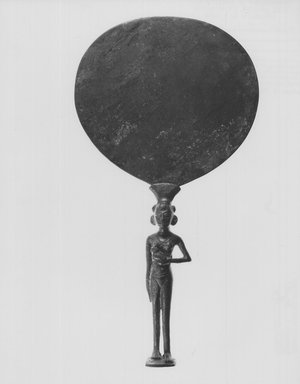
Egyptian. Mirror with Handle in Form of Girl, ca. 1400–1292 B.C.E. Bronze, 8 3/4 x 4 13/16 in. (22.2 x 12.2 cm). Brooklyn Museum, Charles Edwin Wilbour Fund, 60.27.1. Creative Commons-BY (Photo: Brooklyn Museum, CUR.60.27.1_print_negE_bw.jpg)
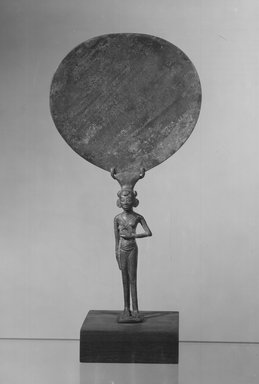
Egyptian. Mirror with Handle in Form of Girl, ca. 1400–1292 B.C.E. Bronze, 8 3/4 x 4 13/16 in. (22.2 x 12.2 cm). Brooklyn Museum, Charles Edwin Wilbour Fund, 60.27.1. Creative Commons-BY (Photo: Brooklyn Museum, CUR.60.27.1_print_negF_bw.jpg)

Egyptian. Mirror with Handle in Form of Girl, ca. 1400–1292 B.C.E. Bronze, 8 3/4 x 4 13/16 in. (22.2 x 12.2 cm). Brooklyn Museum, Charles Edwin Wilbour Fund, 60.27.1. Creative Commons-BY (Photo: Brooklyn Museum, CUR.60.27.1_print_negG_bw.jpg)

Egyptian. Mirror with Handle in Form of Girl, ca. 1400–1292 B.C.E. Bronze, 8 3/4 x 4 13/16 in. (22.2 x 12.2 cm). Brooklyn Museum, Charles Edwin Wilbour Fund, 60.27.1. Creative Commons-BY (Photo: Brooklyn Museum, CUR.60.27.1_print_negH_1_bw.jpg)
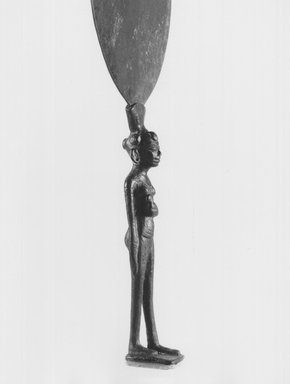
Egyptian. Mirror with Handle in Form of Girl, ca. 1400–1292 B.C.E. Bronze, 8 3/4 x 4 13/16 in. (22.2 x 12.2 cm). Brooklyn Museum, Charles Edwin Wilbour Fund, 60.27.1. Creative Commons-BY (Photo: Brooklyn Museum, CUR.60.27.1_print_negH_2_bw.jpg)
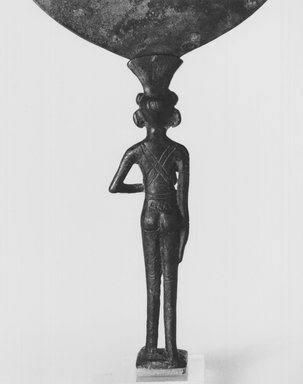
Egyptian. Mirror with Handle in Form of Girl, ca. 1400–1292 B.C.E. Bronze, 8 3/4 x 4 13/16 in. (22.2 x 12.2 cm). Brooklyn Museum, Charles Edwin Wilbour Fund, 60.27.1. Creative Commons-BY (Photo: Brooklyn Museum, CUR.60.27.1_print_negH_3_bw.jpg)

Egyptian. Mirror with Handle in Form of Girl, ca. 1400–1292 B.C.E. Bronze, 8 3/4 x 4 13/16 in. (22.2 x 12.2 cm). Brooklyn Museum, Charles Edwin Wilbour Fund, 60.27.1. Creative Commons-BY (Photo: Brooklyn Museum, CUR.60.27.1_print_negH_4_bw.jpg)

Egyptian. Mirror with Handle in Form of Girl, ca. 1400–1292 B.C.E. Bronze, 8 3/4 x 4 13/16 in. (22.2 x 12.2 cm). Brooklyn Museum, Charles Edwin Wilbour Fund, 60.27.1. Creative Commons-BY (Photo: Brooklyn Museum, CUR.60.27.1_print_negH_bw.jpg)
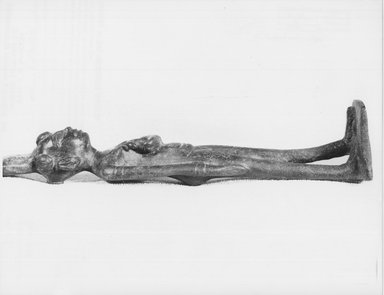
Egyptian. Mirror with Handle in Form of Girl, ca. 1400–1292 B.C.E. Bronze, 8 3/4 x 4 13/16 in. (22.2 x 12.2 cm). Brooklyn Museum, Charles Edwin Wilbour Fund, 60.27.1. Creative Commons-BY (Photo: Brooklyn Museum, CUR.60.27.1_print_negI_bw.jpg)
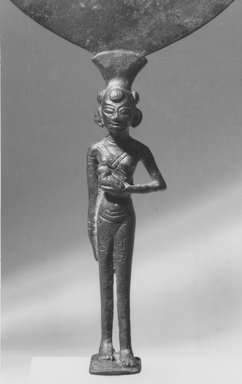
Egyptian. Mirror with Handle in Form of Girl, ca. 1400–1292 B.C.E. Bronze, 8 3/4 x 4 13/16 in. (22.2 x 12.2 cm). Brooklyn Museum, Charles Edwin Wilbour Fund, 60.27.1. Creative Commons-BY (Photo: Brooklyn Museum, CUR.60.27.1_print_negL_562_0A_bw.jpg)
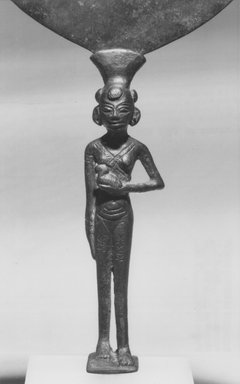
Egyptian. Mirror with Handle in Form of Girl, ca. 1400–1292 B.C.E. Bronze, 8 3/4 x 4 13/16 in. (22.2 x 12.2 cm). Brooklyn Museum, Charles Edwin Wilbour Fund, 60.27.1. Creative Commons-BY (Photo: Brooklyn Museum, CUR.60.27.1_print_negL_562_1A_bw.jpg)
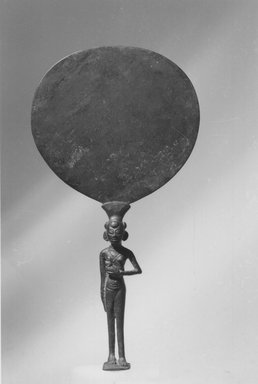
Egyptian. Mirror with Handle in Form of Girl, ca. 1400–1292 B.C.E. Bronze, 8 3/4 x 4 13/16 in. (22.2 x 12.2 cm). Brooklyn Museum, Charles Edwin Wilbour Fund, 60.27.1. Creative Commons-BY (Photo: Brooklyn Museum, CUR.60.27.1_print_negL_562_2A_bw.jpg)
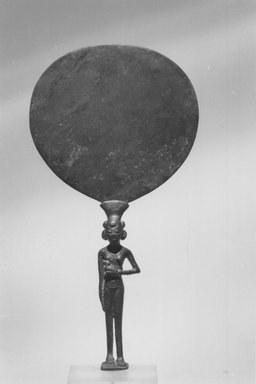
Egyptian. Mirror with Handle in Form of Girl, ca. 1400–1292 B.C.E. Bronze, 8 3/4 x 4 13/16 in. (22.2 x 12.2 cm). Brooklyn Museum, Charles Edwin Wilbour Fund, 60.27.1. Creative Commons-BY (Photo: Brooklyn Museum, CUR.60.27.1_print_negL_562_3A_bw.jpg)
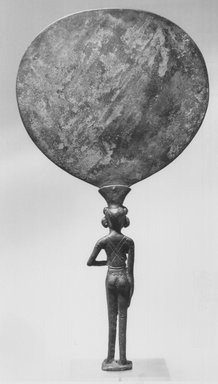
Egyptian. Mirror with Handle in Form of Girl, ca. 1400–1292 B.C.E. Bronze, 8 3/4 x 4 13/16 in. (22.2 x 12.2 cm). Brooklyn Museum, Charles Edwin Wilbour Fund, 60.27.1. Creative Commons-BY (Photo: Brooklyn Museum, CUR.60.27.1_print_negL_562_4A_bw.jpg)

Egyptian. Mirror with Handle in Form of Girl, ca. 1400–1292 B.C.E. Bronze, 8 3/4 x 4 13/16 in. (22.2 x 12.2 cm). Brooklyn Museum, Charles Edwin Wilbour Fund, 60.27.1. Creative Commons-BY (Photo: Brooklyn Museum, CUR.60.27.1_print_negL_562_5A_bw.jpg)
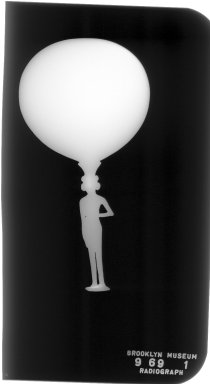
Egyptian. Mirror with Handle in Form of Girl, ca. 1400–1292 B.C.E. Bronze, 8 3/4 x 4 13/16 in. (22.2 x 12.2 cm). Brooklyn Museum, Charles Edwin Wilbour Fund, 60.27.1. Creative Commons-BY (Photo: Brooklyn Museum, CONS.60.27.1_1969_xrs_view01.jpg)
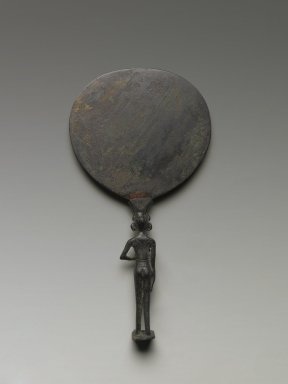
Egyptian. Mirror with Handle in Form of Girl, ca. 1400–1292 B.C.E. Bronze, 8 3/4 x 4 13/16 in. (22.2 x 12.2 cm). Brooklyn Museum, Charles Edwin Wilbour Fund, 60.27.1. Creative Commons-BY (Photo: Brooklyn Museum, 60.27.1_back_PS2.jpg)
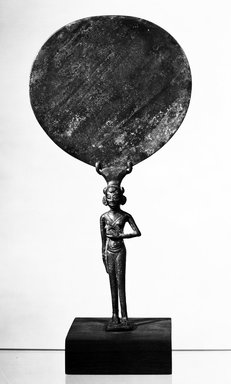
Egyptian. Mirror with Handle in Form of Girl, ca. 1400–1292 B.C.E. Bronze, 8 3/4 x 4 13/16 in. (22.2 x 12.2 cm). Brooklyn Museum, Charles Edwin Wilbour Fund, 60.27.1. Creative Commons-BY (Photo: Brooklyn Museum, 60.27.1_NegF_bw_SL4.jpg)
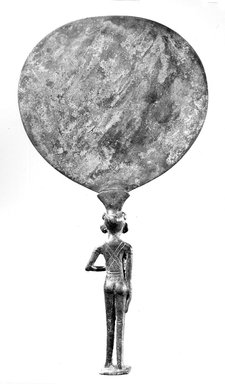
Egyptian. Mirror with Handle in Form of Girl, ca. 1400–1292 B.C.E. Bronze, 8 3/4 x 4 13/16 in. (22.2 x 12.2 cm). Brooklyn Museum, Charles Edwin Wilbour Fund, 60.27.1. Creative Commons-BY (Photo: Brooklyn Museum, CUR.60.27.1_NegB_print_bw.jpg)

Egyptian. Mirror with Handle in Form of Girl, ca. 1400–1292 B.C.E. Bronze, 8 3/4 x 4 13/16 in. (22.2 x 12.2 cm). Brooklyn Museum, Charles Edwin Wilbour Fund, 60.27.1. Creative Commons-BY (Photo: Brooklyn Museum, CUR.60.27.1_NegA_print_bw.jpg)
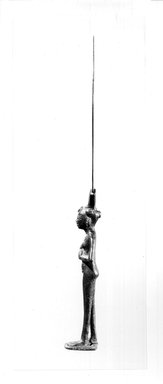
Egyptian. Mirror with Handle in Form of Girl, ca. 1400–1292 B.C.E. Bronze, 8 3/4 x 4 13/16 in. (22.2 x 12.2 cm). Brooklyn Museum, Charles Edwin Wilbour Fund, 60.27.1. Creative Commons-BY (Photo: Brooklyn Museum, CUR.60.27.1_NegC_print_bw.jpg)

Egyptian. Mirror with Handle in Form of Girl, ca. 1400–1292 B.C.E. Bronze, 8 3/4 x 4 13/16 in. (22.2 x 12.2 cm). Brooklyn Museum, Charles Edwin Wilbour Fund, 60.27.1. Creative Commons-BY (Photo: Brooklyn Museum, CUR.60.27.1_NegD_print_bw.jpg)
Mirror with Handle in Form of Girl
Egyptian, Classical, Ancient Near Eastern Art
On View: Egyptian Orientation Gallery, 3rd Floor
Although commonplace objects to us, mirrors held great meaning to the ancient Egyptians.
The Egyptians first used mirrors in the Old Kingdom (Third through Sixth Dynasties; circa 2675–2170 B.C.E.) if not earlier. The design—elliptical disks supported by handles shaped like papyrus plants—symbolized the moment when the creator-god emerged from the primordial swamp in the form of the sun. The Egyptians believed that all life began in this so-called First Moment. When they picked up their mirrors each morning they were thus reminded of creation.
The shape of mirrors changed over time. In the Eighteenth Dynasty, the traditional oval disk was replaced by a circular form. Handles appeared in a wide variety of shapes, including images of animals, adolescent girls, and papyrus flowers.
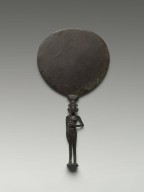
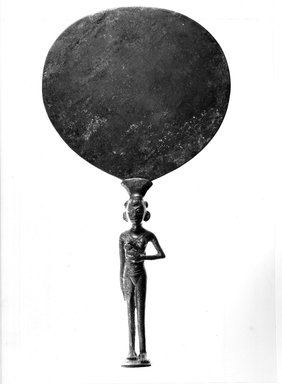



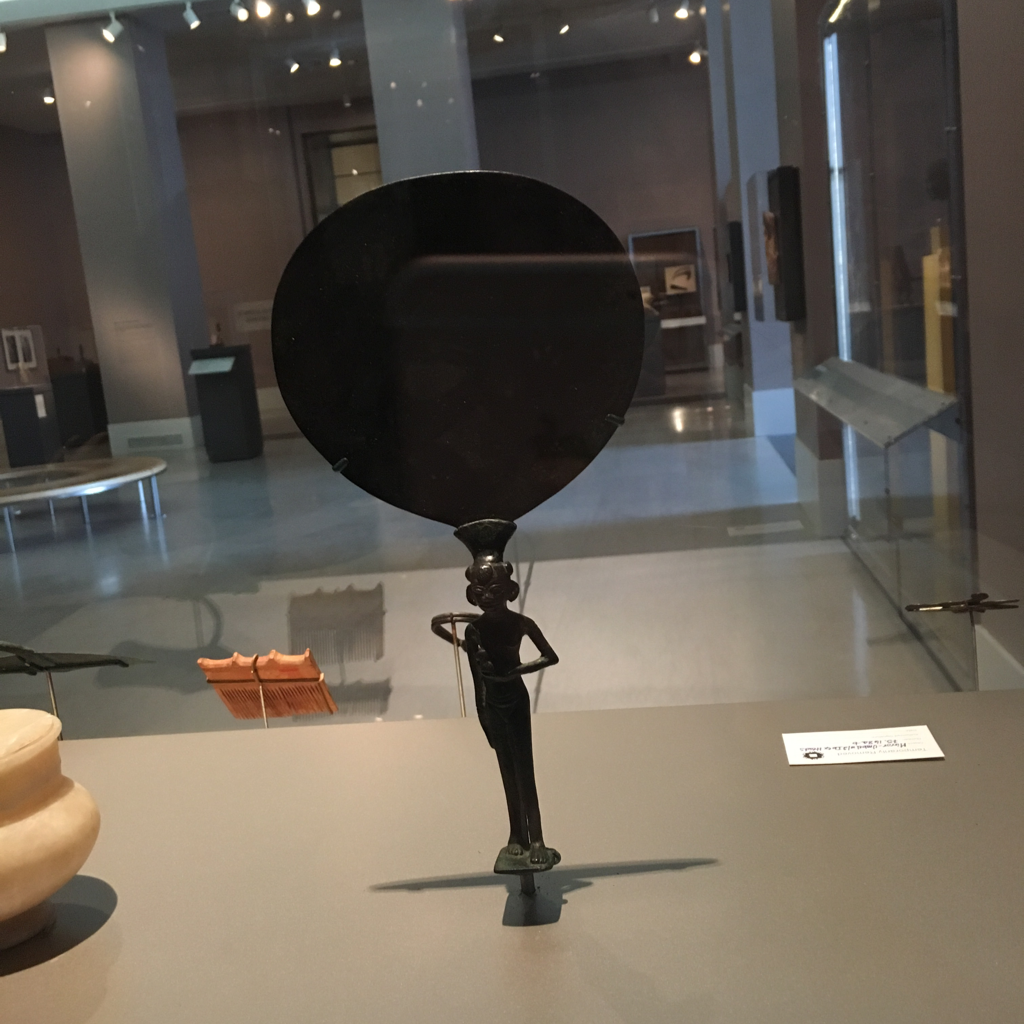
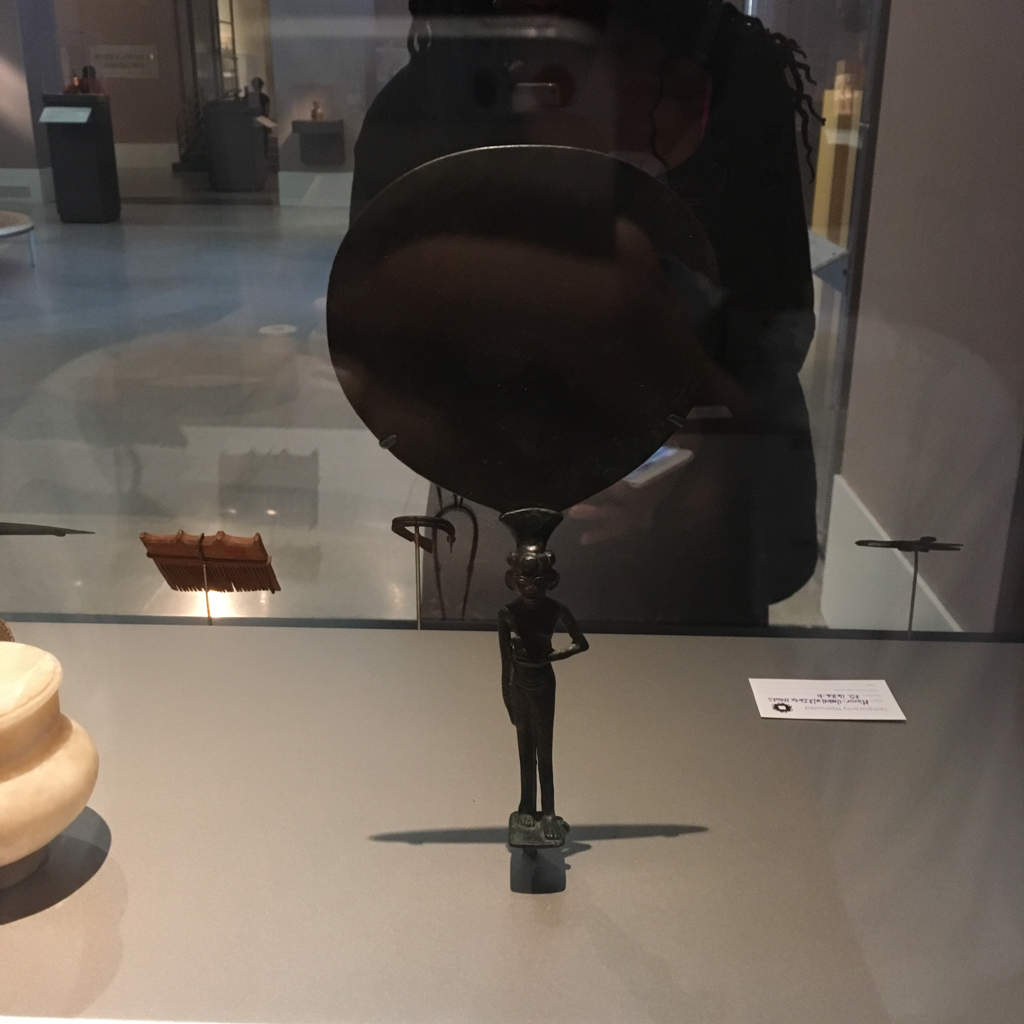
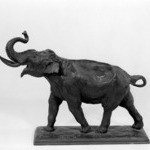
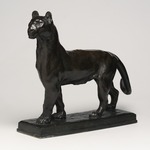

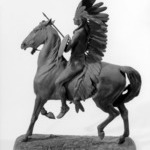

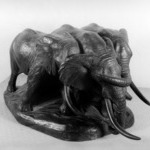
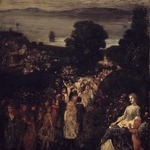
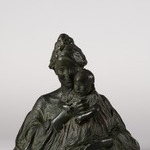
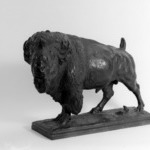
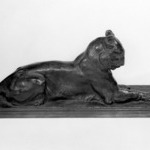
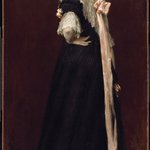


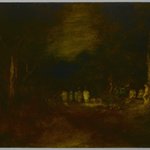
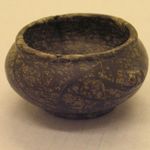
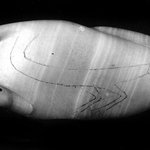
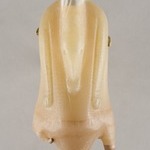
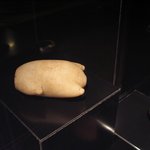
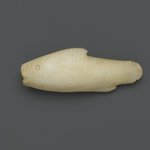
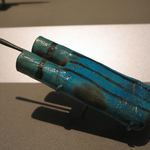

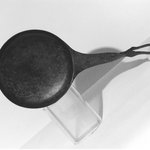

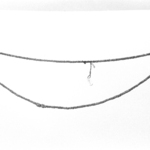
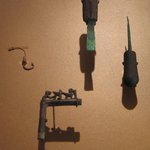
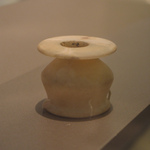

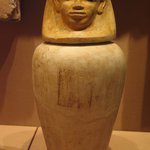
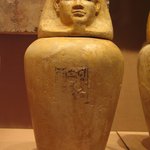
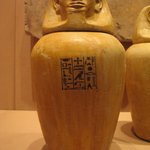

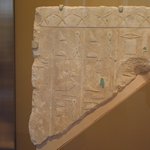
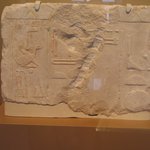
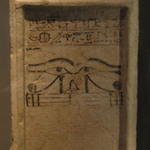
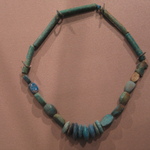
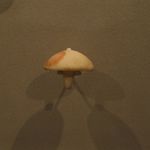
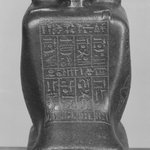

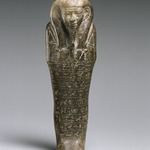

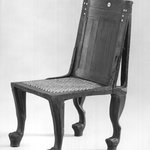
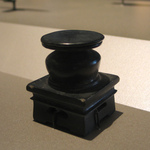
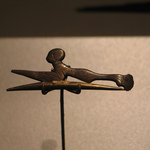
![Portrait of Mlle Fiocre in the Ballet "La Source" (Portrait de Mlle...E[ugénie] F[iocre]: à propos du ballet "La Source")](https://d1lfxha3ugu3d4.cloudfront.net/images/opencollection/objects/size2_sq/21.111_PS11.jpg)
